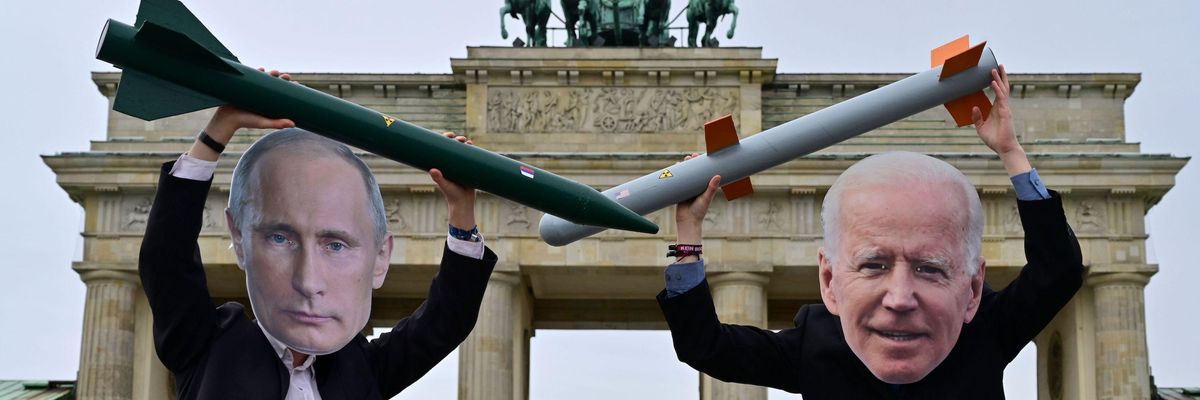The Treaty on the Prohibition of Nuclear Weapons was adopted six years ago this week.
On that day—July 7, 2017—122 non-nuclear nations chose hope over fear, realizing the interconnectedness of all life on this planet, and refusing to be bullied or held hostage by the nuclear nations. Recognizing the devastating humanitarian consequences of even a limited regional nuclear conflict using less than .5% of the global arsenals, their voices rose up and said no to the continued existence of these immoral weapons.
In addressing the interconnected, existential threats of climate change and nuclear weapons, nuclear weapons remain the elephant in the room largely due to unexamined assumptions. We all see the effects of climate change each day in our communities and across the planet, and are therefore motivated by a sense that we can all do some small piece to mitigate this change. From recycling to investing in energy-efficient homes, communities, and cars, we feel empowered. The larger global climate imperatives are left to the world’s leaders each vying for their own vested interests and not for the collective good.
Regarding nuclear weapons there can be a feeling that an individual cannot make a difference, they exist, they cannot be eliminated, they make us safe, and they are somehow sustainable. Even thinking about them promotes an overwhelming sense of impotence, paralysis, and a belief that nothing can be done. This is the story, the narrative, we tell ourselves. We must change this story. As Robert Kennedy said, “Some men see things as they are, and ask why. I dream of things that never were, and ask why not.” Out of the status quo and fear came the U.S. decision to modernize its entire nuclear arsenal to an estimated cost of over $1.5 trillion in the decades ahead. This was the “grand bargain” negotiated by President Obama, to gain support from a conservative Congress in ratifying the New START Treaty in spite of being obligated under Article VI of the Treaty on the Non-Proliferation of Nuclear Weapons to work in “good faith” along with all other nuclear nations to abolish their nuclear arsenals. In fact, there is no significant effort towards nuclear abolition by the nuclear nations and this modernization has been the greatest driver of the arms race with all other nuclear nations following suit and modernizing their arsenals.
The very existence of nuclear weapons is clearly not sustainable and indeed threatens everything we care about, and potentially all of life. This does not have to be the way it is and we can do something about it.
At the peak of the Cold War there were over 63,000 nuclear weapons. Today there are ~12,512. The TPNW (Treaty on the Prohibition of Nuclear Weapons) provides an international framework and vision of hope. Citizens and civil society in nuclear nations around the world are adopting the Treaty, and pushing their elected officials through the ICAN cities appeal. In the United States, a rapidly growing grassroots coalition with representation of all facets of society from health and scientific to environmental, religious, social justice, peace and veterans groups is engaging our communities and elected officials in this work to abolish nuclear weapons.
This movement to prevent nuclear war is called Back from the Brink. With an intention to abolish nuclear weapons, it includes the common sense precautionary measures necessary to prevent nuclear war until their complete abolition has been achieved. Working in community, this effort has instilled hope, energizing those involved across our nation. This coalition is working with the International Campaign to Abolish Nuclear Weapons, ICAN building support to save the world from the most immediate existential threat. This framework of international cooperation provides a model moving forward in the ongoing effort to solve the crisis of climate change.
As Vaclav Havel said, “Hope is not the conviction that something will turn out well but the certainty that something makes sense, regardless of how it turns out.”



